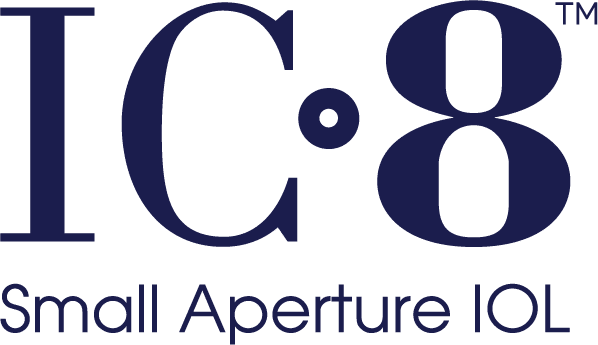Cataracts and glaucoma affect millions of people around the globe. As we age, our risk of developing one or both conditions increases. While cataracts and glaucoma are not related, many people, especially after age 60, do develop both simultaneously. When this happens, a question that often arises is, “Can I still get cataract surgery if I have glaucoma?”
Having both conditions can present unique challenges that doctors must evaluate on a case-by-case basis, but quite often the answer is “yes.” In fact, in some cases, cataract surgery can actually lower high eye pressure, thus reducing the number of medications required to manage glaucoma. To learn more about how both conditions are treated, let’s start by looking at each condition individually and how they are diagnosed.
What is a cataract?
A cataract is a cloudy area in the lens of the eye. A cataract forms when proteins in the eye’s lens begin to break down and clump together, forming cloudy areas that can result in dull and blurry vision. Other common symptoms of cataracts include seeing halos around light, making night driving difficult, fading or yellowing of colors and needing brighter light for reading and other activities.
Typically, cataracts develop very slowly. While they can occur at any age, cataracts most commonly begin to develop in our 40s or 50s, but may not begin affecting vision until after age 60.
What is glaucoma?
Glaucoma is a disease that damages the eye’s optic nerve. It is linked to a build-up of fluid pressure inside the eye known as intraocular pressure. Because the optic nerve is the vehicle that transmits images to the brain, when it becomes damaged, it can cause varying degrees of vision loss, including patchy or blurry vision, and in some cases loss of central vision. Although glaucoma can affect anyone at any age, it typically affects adults over age 40.
There are different forms of glaucoma. The most common form, primary open-angle glaucoma, develops slowly and often with no symptoms. Many people are not even aware they have glaucoma until they have significant vision loss. A less common form, acute angle-closure glaucoma, comes on abruptly and may include symptoms such as pain, nausea, seeing halos and blurred vision.
How are cataracts and glaucoma diagnosed?
Both glaucoma and cataracts can be diagnosed during a routine eye exam. An eye doctor will typically perform several tests including a visual acuity test to see if vision shows signs of impairment. A slit-lamp examination is also common. A slit lamp allows a doctor to see the structures at the front of the eye under magnification, making it easier to detect any abnormalities. Other common eye exam procedures include examination of the retina, for which a doctor may use dilating eye drops to enlarge the pupil and more easily see the back of the eye, tonometry, which measures the inner pressure of the eye, and an examination of the optic nerve. Using routine tests like these, an eye doctor can typically diagnose glaucoma and cataracts as part of a regular eye exam.
How are cataracts and glaucoma treated?
When detected early, both glaucoma and cataract are treatable conditions.
To permanently correct visual impairment caused by a cataract, cataract surgery is necessary. Cataract surgery involves removing the eye’s clouded natural lens and replacing it with an artificial lens known as an intraocular lens, or IOL.
In general, glaucoma cannot be cured, but it can be controlled. Glaucoma treatments use medications, surgery or a combination of both to reduce pressure inside the eye.
How are simultaneous cataracts and glaucoma treated?
When both conditions occur at the same time, how your eye doctor chooses to treat them can vary.
Typically, if a cataract is present but doesn’t cause visual impairment that interferes with everyday activities, a doctor may choose to treat only the glaucoma and continue to monitor the progression of the cataract. Because cataracts form slowly, it is possible to live with them for many years before they need to be removed.
If glaucoma is considered mild and stable, but a cataract is interfering with vision, a doctor may choose to treat the glaucoma with medication or a procedure and perform cataract surgery to remove the cataract. It is even possible, if the cataract is large enough that it is causing crowding of other structures in the eye, simply removing it may be enough to reduce the pressure inside the eye.
In some cases, though, a doctor may choose to both remove the cataract and perform glaucoma surgery at the same time. It is even possible that the same incision can be used for both procedures. However, there are many factors to consider about whether or not cataract surgery and glaucoma surgery can be performed simultaneously, and only a qualified eye doctor can make the determination.
One of the best things you can do for your eyes is to get a comprehensive eye exam every year, especially after age 40. Even if you have never needed vision correction and you consider your eyes to be healthy, an eye exam is important because early detection is critical to a successful outcome when it comes to eye diseases like cataract and glaucoma.
If you’ve been diagnosed with a cataract, talk to your doctor about the best intraocular lens option for you. Learn more about the IC-8 lens for cataract surgery. It offers many advantages over traditional (monofocal) and multifocal IOLs. It is designed to provide a natural range of vision from near to far, including mid-range vision needed to read a computer screen.
References and more information:



